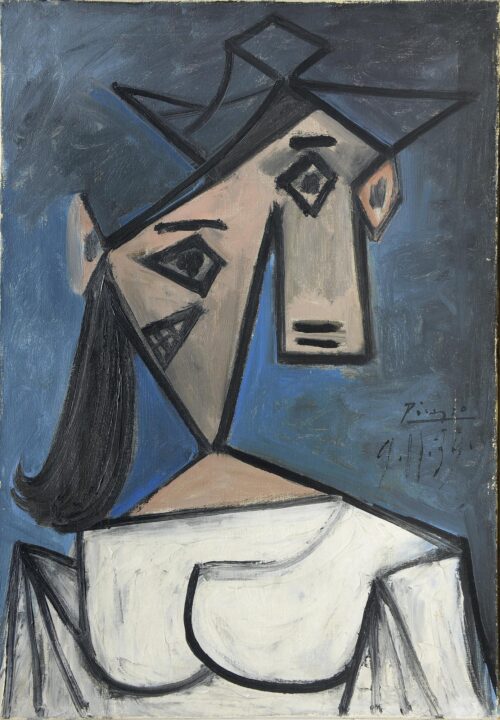
Picasso Pablo (1881 - 1973)
Woman’s Head, 1939
He began his studies in 1892 at the La Corunna School of fine Arts and created his works under the tutelage of his father, who had realized his son possessed special talents when the boy was still very young. In 1893 the family moved to Barcelona where his father was appointed Professor at the Loncha School of Fine Arts, where Picasso would also be a student. In 1897 he triumphantly entered the San Fernando Academy. In 1898 he returned to Barcelona, frequented the Els Quatre Gats tavern, a meeting place for artists and a contact point with the art of his period. His first exhibition would be held in this space. In 1901 he settled in Madrid and worked as the artistic director of the magazine Arte Joven. He made his first trip to Paris and did the first portraits of his so-called Blue Period.
In 1904 he settled permanently in Paris and continued to produce the works of his Blue Period. He set himself up in the notorious Bateau-Lavoir studio. His works were then dominated by maternity, clowns, and circus people and marked by a sense of melancholy. In 1904 his so-called Rose Period began, though the subject matter was, generally speaking, the same. He met Apollinaire.
In 1906 Gertrude Stein introduced him to Matisse. In 1907 he began work on one of his most famous paintings, the one that would be known under the name les Damoisellles d’ Avignon. Kahnweiller, the important gallery owner, visited him in his studio. He met Braque.
Picasso’s plastic inquiries converged with those of Braque. Cubism was thus born. Many artists would fall in with them. In 1909 he made his first sculpture. He continued his exhibition activity. At the Salon d’ Automne in 1911, the Cubists exhibited their works in a separate room, but Picasso did not participate.
In 1912 he made his first collages and assemblages. During that period he worked closely with Braque. He initiated the second phase of Cubism, synthetic cubism. Fo a time he lived in a village near Avignon.
With the outbreak of World War I, the artistic community scattered here and there. In 1916 he met the writer Jean Cocteau and they travelled together to Italy where he met Diaghilev and the Ballets Russes.
He launched his first cooperative endeavor with that group and would make stage sets and costumes for the work Parade. This cooperative endeavor would last till 1924. In 1918 this group exhibited with Matisse. By then Picasso was already a recognized artist and was comfortably off. The following year he spent the summer at the Cote d’ Azur for the first time.
During this period his works took a turn toward neoclassicism.
He formed bonds with Andre Breton and participated in the fist surrealist exhibition in 1925. Though he never belonged to the group the recognized the powerful potential of their message. In 1928 he dedicated himself to sculpture and learned metal working form Julio Gonzales.
From 1925 to 1937 he worked non-stop, producing paintings and sculpture. In 1931 two important books were published, Ovid’s metamorphosis and Balzac’ s Unknown Masterpiece, both of which were illustrated by Picasso’s prints. He had his first retrospective in 1932 and the first volume of his complete works went into circulation. In 1933 he illustrated the cover to the first issue of the important journal Minotaure. This was the first time that the symbol of the Minotaure appeared in his work and marked his initial use of bullfighting as a subject. In 1936 he was appointed Director of the Prado by the Republican Government of Spain. On April 26 the town of Guernica was bombed. This event led to the creation of the work of the same name, a landmark in the history of painting. The multitude of preliminary drawings and the feverish pace of the work was captured at the photographic reportage of Dora Maar. The work was exhibited at the pavilion of the Republican Government of Spain at the International Exhibition of Paris of 1937.
In 1939 he had his first large retrospective in New York. During the war, Picasso refused to leave Paris. He was transformed into a symbol of independence and freedom, and even more so immediately after the Liberation of France. In 1944 he joined the Communist Party. In 1946 he settled more or less permanently on the Cote d’Azur where a large space in the tower of the town of Antibes was ceded to him, to be later transformed into the Picasso Museum. During this period he was deeply involved with the decoration of pottery vases. He worked non-stop till the end of his life.
His name has become synonymous with painting. His creative passion left behind an enormous ouvre which was stylistically reinvigorated many times. Without Picasso, European art would have followed a different course of development.

Woman’s Head, 1939
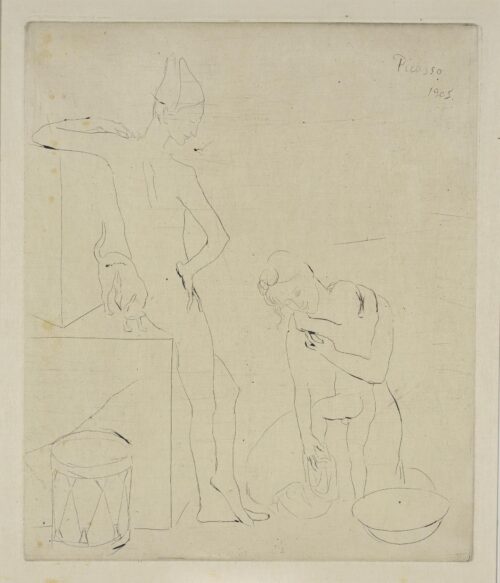
The bath, 1905
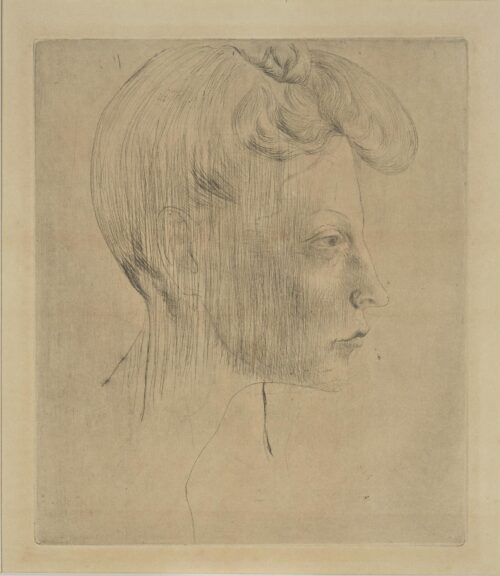
Head of a woman in profile, 1905
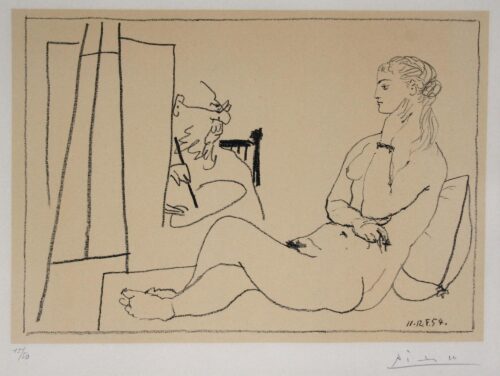
Reclining model, 1954
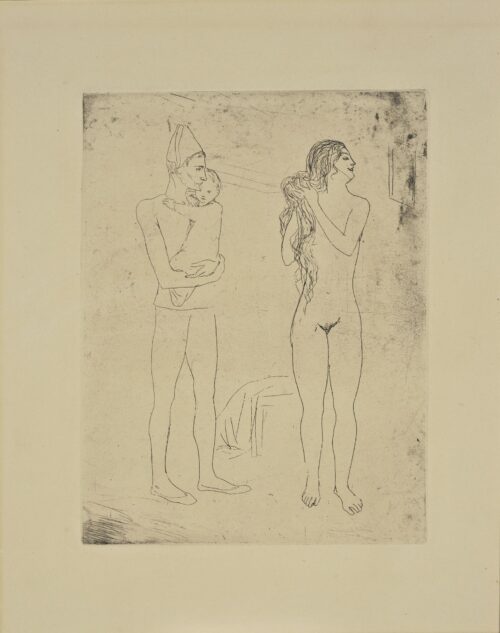
Mother’s toilette, 1905
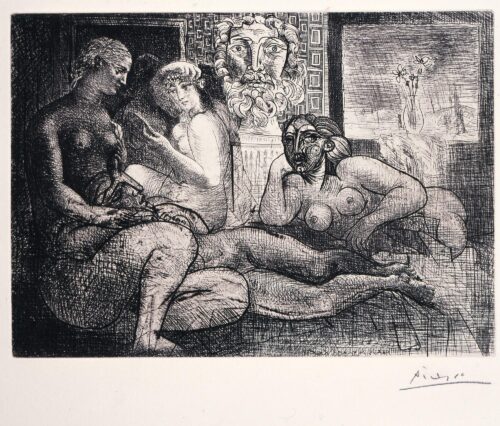
Four female nudes and a sculptured head, 1934
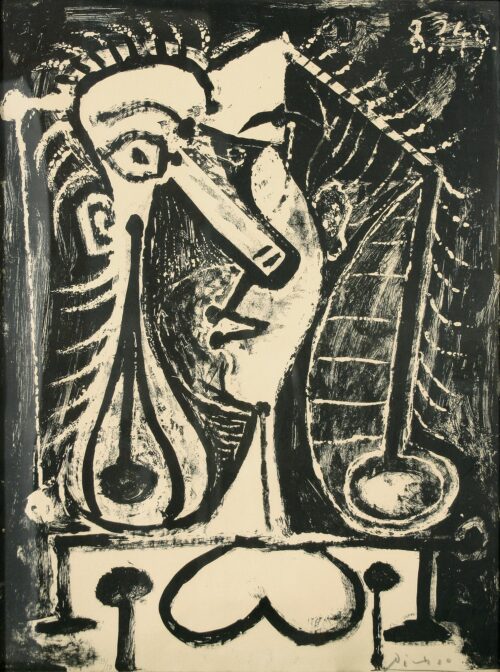
Composed figure II, 1949

We use cookies to make our site work properly, to personalize content and ads, to provide social media features and to analyze our traffic. We also share information about how you use our site with our social media, advertising and analytics partners. Read the Cookies Policy.
These cookies are necessary for the website to function and cannot be switched off in our systems. They are usually only set in response to actions made by you which amount to a request for services, such as setting your privacy preferences, logging in or filling in forms. You can set your browser to block or alert you about these cookies, but some parts of the site will not then work. These cookies do not store any personally identifiable information.
If you disable this cookie, we will not be able to save your preferences. This means that every time you visit this website you will need to enable or disable cookies again.
These cookies tell us about how you use the site and they help us to make it better. For example these cookies count the number of visitors to our website and see how visitors move around when they are using it. This helps us to improve the way our site works, for example, by ensuring that users find what they are looking for easily. Our website uses Google Analytics for statistics reporting.
Please enable Strictly Necessary Cookies first so that we can save your preferences!